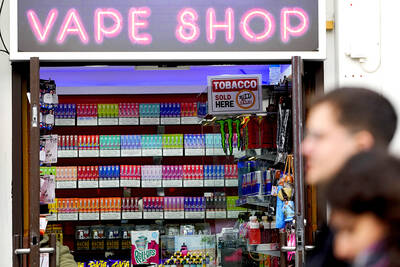Tokio Marine Newa Insurance Corp (新安東京海上產險) has completed a capital injection of NT$12 billion (US$388.48 million) to boost its risk-based capital ratio to a healthy level of 200 percent, the firm said yesterday.
Since last year, the company had already completed three additional injections totaling NT$27.99 billion, as its finances were severely hit by COVID-19 insurance claims.
In April, the Financial Supervisory Commission (FSC) asked the firm to submit improvement plans and conduct a capital injection, as its risk-based capital ratio had declined below the regulatory minimum of 50 percent — it was minus-685 percent at the end of June last year and minus-1,078 percent at the end of last year.

Screen grab from Tokio Marine Newa Insurance Corp’s Web site
The firm’s equity-to-asset ratio was minus-54.92 percent at the end of June last year and minus-87.92 percent at the end of last year, far below the regulatory minimum of 3 percent, Tokio Marine data showed.
The most recent capital injection was funded by the firm’s major shareholders: Yulon Motor Co (裕隆) and Tokio Marine & Nichido Fire Insurance Co Ltd, a unit of Tokio Marine Holdings Inc.
Separately, Mercuries Life Insurance Co (三商美邦人壽保險) and Hontai Life Insurance Co (宏泰人壽) plan to sell property to fund their cash injections in light of weakening solvency gauges.
Mercuries Life’s risk-based capital ratio was 155 percent and its equity-to-asset ratio was 2.19 percent at the end of last year, while Hontai Life’s were 205 percent and 1.13 percent respectively, the firms’ data showed.

CAUTIOUS RECOVERY: While the manufacturing sector returned to growth amid the US-China trade truce, firms remain wary as uncertainty clouds the outlook, the CIER said The local manufacturing sector returned to expansion last month, as the official purchasing managers’ index (PMI) rose 2.1 points to 51.0, driven by a temporary easing in US-China trade tensions, the Chung-Hua Institution for Economic Research (CIER, 中華經濟研究院) said yesterday. The PMI gauges the health of the manufacturing industry, with readings above 50 indicating expansion and those below 50 signaling contraction. “Firms are not as pessimistic as they were in April, but they remain far from optimistic,” CIER president Lien Hsien-ming (連賢明) said at a news conference. The full impact of US tariff decisions is unlikely to become clear until later this month

Popular vape brands such as Geek Bar might get more expensive in the US — if you can find them at all. Shipments of vapes from China to the US ground to a near halt last month from a year ago, official data showed, hit by US President Donald Trump’s tariffs and a crackdown on unauthorized e-cigarettes in the world’s biggest market for smoking alternatives. That includes Geek Bar, a brand of flavored vapes that is not authorized to sell in the US, but which had been widely available due to porous import controls. One retailer, who asked not to be named, because

CHIP DUTIES: TSMC said it voiced its concerns to Washington about tariffs, telling the US commerce department that it wants ‘fair treatment’ to protect its competitiveness Taiwan Semiconductor Manufacturing Co (TSMC, 台積電) yesterday reiterated robust business prospects for this year as strong artificial intelligence (AI) chip demand from Nvidia Corp and other customers would absorb the impacts of US tariffs. “The impact of tariffs would be indirect, as the custom tax is the importers’ responsibility, not the exporters,” TSMC chairman and chief executive officer C.C. Wei (魏哲家) said at the chipmaker’s annual shareholders’ meeting in Hsinchu City. TSMC’s business could be affected if people become reluctant to buy electronics due to inflated prices, Wei said. In addition, the chipmaker has voiced its concern to the US Department of Commerce

STILL LOADED: Last year’s richest person, Quanta Computer Inc chairman Barry Lam, dropped to second place despite an 8 percent increase in his wealth to US$12.6 billion Staff writer, with CNA Daniel Tsai (蔡明忠) and Richard Tsai (蔡明興), the brothers who run Fubon Group (富邦集團), topped the Forbes list of Taiwan’s 50 richest people this year, released on Wednesday in New York. The magazine said that a stronger New Taiwan dollar pushed the combined wealth of Taiwan’s 50 richest people up 13 percent, from US$174 billion to US$197 billion, with 36 of the people on the list seeing their wealth increase. That came as Taiwan’s economy grew 4.6 percent last year, its fastest pace in three years, driven by the strong performance of the semiconductor industry, the magazine said. The Tsai